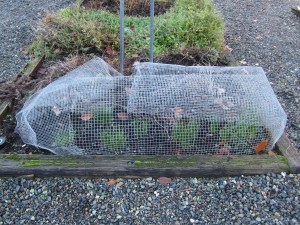Most of Seattle got the better part of a foot of snow or more in the course of a week and a half, starting on Super Bowl Sunday. The newspapers declared this was the biggest snow event since 1949. Seattle has many steep hills, pavement that can thaw in the day, then freeze at night (a bad combination for driving as our UW climatology guru, Cliff Mass has pointed out) and few snow plows because we rarely need them. So the city came to a near standstill. Imagine the horror. Workers and students were forced to stay home, gaze out at the glowing, pristine countryside, walk or ski or sled though a soft, dazzling, snowy wonderland, greeting their seldom-seen friends and neighbors on the street, lingering for long hours at local coffee shops and bars (at least those that were open) and city parks, carrying food home from the store in packs on their backs (like CrossFit with a purpose) or maybe joyously sledding down closed streets or neighborhood green spaces. What could be worse?
Somehow we survived. Hopefully we all had the opportunity to push free someone’s car stuck in the snow or return a lost mitten, put extra food out for the birds or let in a cold, stray cat for a few days. Though they are the bane of school administrators and production managers, extreme weather events are a blessing in disguise. The dark spell of the daily routine can chip away at our spirits. Anything that can break that spell is a reminder that we are, at our essential core, believe it or not, free, despite the fetters we make for ourselves.
But not as free as this airborne wanderer:

A Cooper’s hawk (Accipiter cooperii) showed up near Cascara Circle. The crows hadn’t arrived yet to chase it off but the alarm calls of little birds were a good tip to look up.

Section F hardware cloth rabbit screens turned into plastered walls. This was the first snow and then we got hit with a lot more.

Section C with the snow starting to accumulate. The deodar cedars (Cedrus deodara) in the background have a light dusting of snow but they eventually became overloaded as the weather warmed and the snowflakes got bigger. Some large, heavy branches broke.

Joe Pye weed (Eupatorium purpureum) as the first flakes were falling, before the heavy snow collapsed most of the flower stalks.

Behold the path north of section A shortly after the snow started and before the big limbs started falling.

The same path under the shattered limbs of the Atlas cedar. As you can see, it doesn’t take much snow to break their branches.

Three conifers, two of which seem to do fine in the snow but one of which is a disaster area unto itself and a menace to those nearby. The dark green tree to the left is a Chinese juniper (Juniperus chinensis). It sustained no damage in the snow and is, thankfully, outside the dripline of the center tree, the Atlas cedar (Cedrus atlantica) which will drop limbs at the barely whispered rumor of an approaching storm. If you must have one, plant it far from the house and the kids’ sandbox. The poor little Japanese umbrella pine (Sciadopitys verticillata) to the right and in the shadow of its giant neighbor, normally sheds snow quite easily. Unfortunately it caught a very heavy limb and sustained a bit of damage but it will be fine…

That blasted, blighted upright wreck of a tree at center is the lower half of what is left of the Atlas cedar surrounded by some of its fallen limbs.

Australian tea tree (Melaleuca alternifolia) looking a bit frazzled from the cold. The darker green shrub leaning against it is a manuka (Leptospermum scoparium). All of the manuka shrubs seem to have come through fine except for being pushed over by the weight of the snow (which has already melted in this photo…obviously). That was the fate of a lot of shrubs, many of which were blocking pathways and had to be severely pruned. The campus is well represented by several species of Viburnum which can be cut back hard, only to grow quickly to their original size. No wonder they’re so popular as landscape plants.

As the snow melts, tracks (these are raccoon) get bigger. Raccoon and rabbit tracks were all over the place during the snow days. Squirrels seemed to be hunkering down for a while but they appeared again as the snow started to consolidate and finally melt. The bad news for them was no students or staff dropping food in the trash cans for a few days but the good news was that trash pickup was also suspended.

Happy days; the snow is melting. After shoveling the stuff for a few days, as it slowly gets heavier, it is a bit of a relief to see it melting away. Hopefully it protected the less hardy plants during the coldest nights. I fear we might have dipped below 20F at least once.
All of the outgoing seed orders have gone in the mailbox to distant lands around the globe. It is officially time to begin planting seeds for this summer. Soon there might be something worth writing about the plants in the garden. Look forward to some new arrivals, as always, and be prepared for some winter weather losses. Weather…it’s always something with the weather. Accept that fact and your gardening days will be much happier.
making a snowman
the finer points of sledding
today’s school lessons
See you in the garden.























































































































































